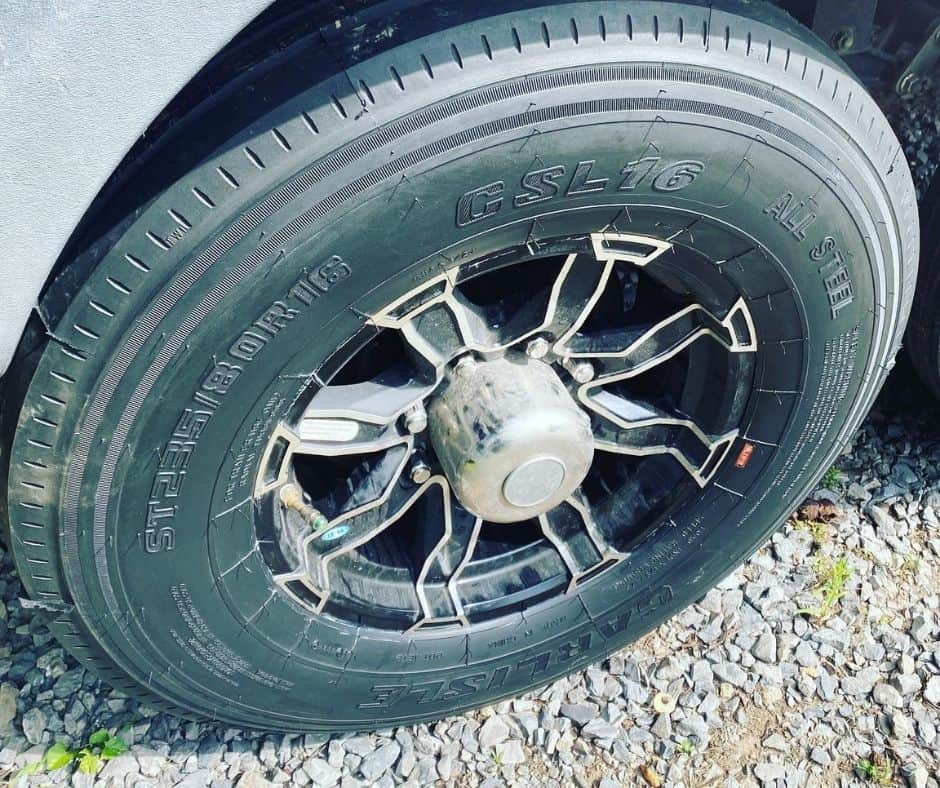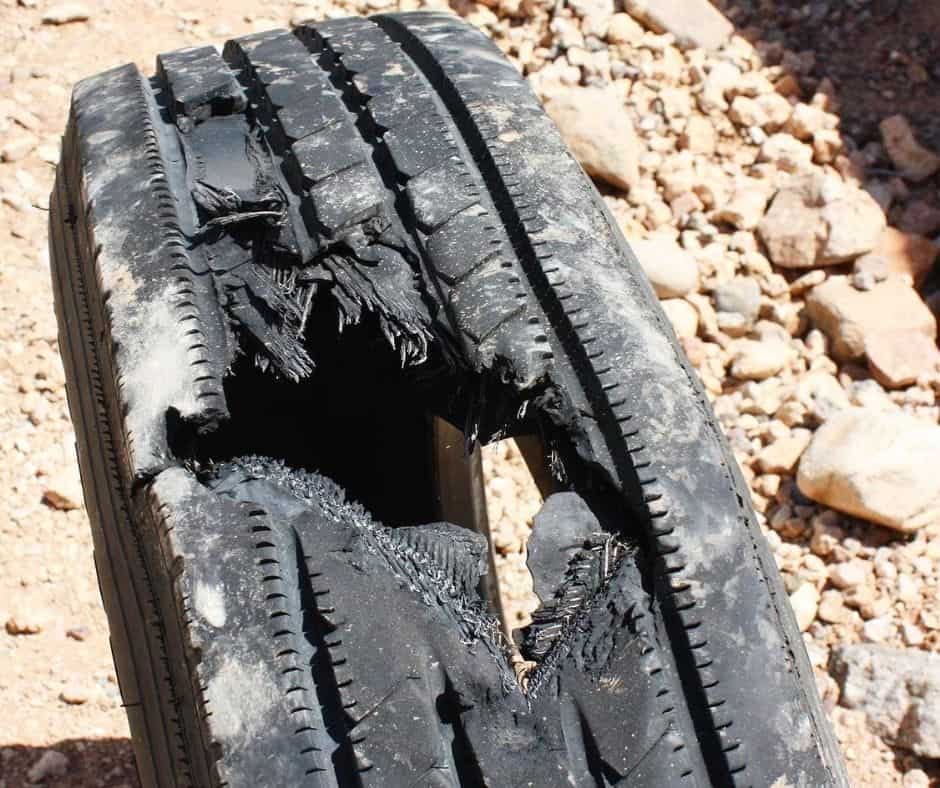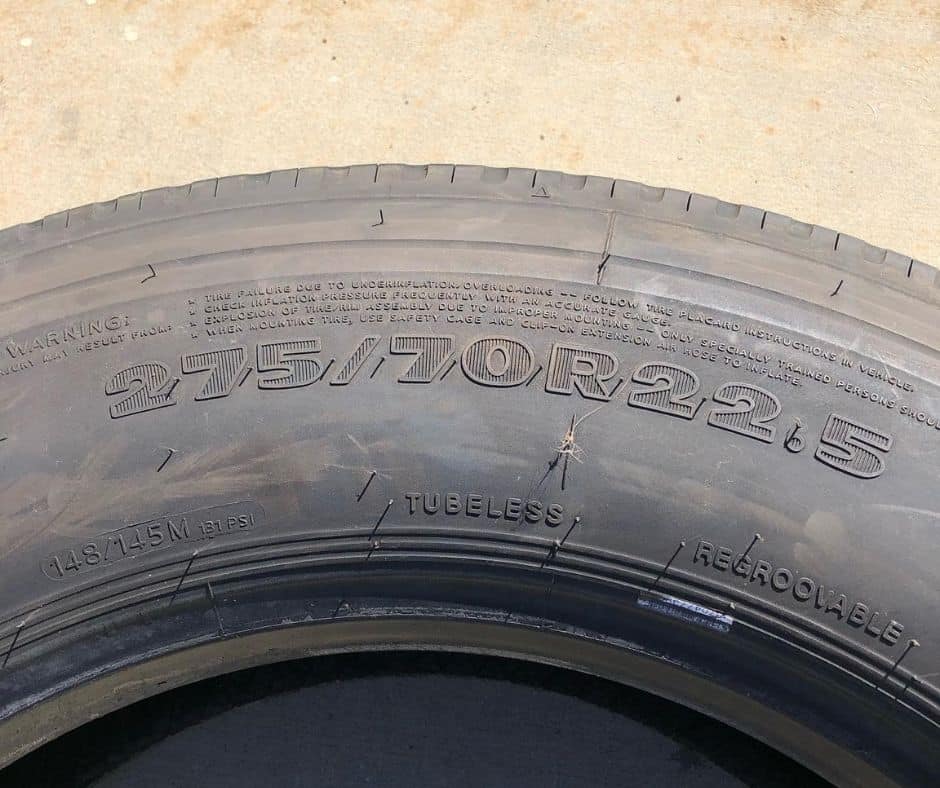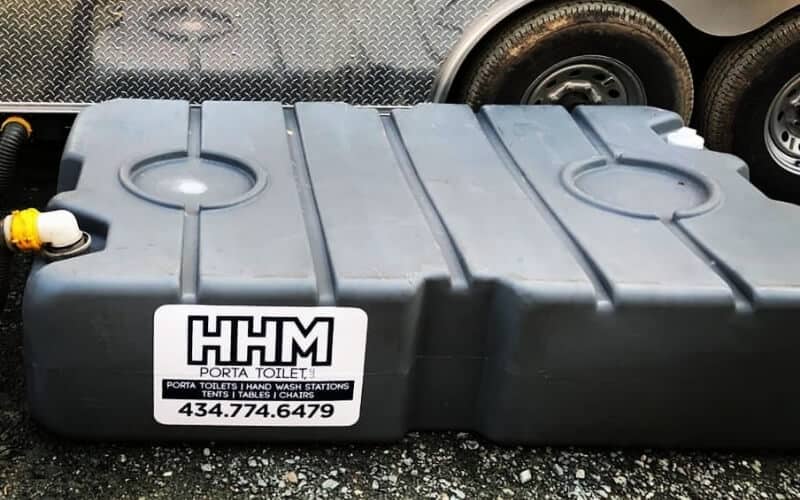Speed limits are intended to keep drivers safe from the traffic and stretch of road they are driving on.
Though speed ratings are assigned to tires based on the materials they are made from, the type of vehicle they can be installed on, and load dynamics they are capable of.
Of course, tire speed ratings take on a whole new dimension when the load we are talking about is a travel trailer or similar type of RV. In this context, the load is considered to be the trailer’s total weight or gross vehicle weight rating (GVWR) when the tire is brand new.
As time goes on, other factors like wear & tear, the level of inflation and even the weather can impact the speed that you can safely travel with your travel trailer.
Even if the speed limit says one thing, your tire’s speed rating is still the presiding factor.
How Can I Find Out My Trailer Tire’s Speed Rating?
Tire manufacturers will embed the speed rating of a tire on the sidewall, and then also include it in the owner’s manual or similar documents when you purchase the tire.
In the case of a vehicle or a motorhome, you can also find the speed rating for the tires printed inside the driver’s door well.
It will be printed along with other critical information like GVWR and towing capacity.
Though these numbers are only specifically related to the brand and type of tire that the vehicle, truck, or motorhome came with when it was new off the line.
If you or a previous owner have changed the tires, the information might not match, as it is related specifically to that type of tire.
How To Read A Tire’s Speed Rating On The Sidewall?
The tire’s sidewall is truly the best source of information for determining the speed rating.
Though you do need to know how to decode all of the numbers. In this case, the information that you need is attached to the last “Letter” printed on the technical description on the sidewall of the tire.
If a tire is imprinted with a code like 2015/60R15 91V, the tire speed has a V rating.
What Do The Different Letters Mean on the Tire’s Sidewall?
Over the years the different types of letter designations for tires have evolved from three to as many as 20.
Though for the average person or RV owner the labels of B through V mean that the tire has a speed range from 31 to 149 miles per hour.
The other letters beyond V are for high-performance vehicles or race cars.
The letters G, J, K, and L are used for tires that have a speed rating between 65 to 75 miles per hour.
In the example where the tire has a V-rating, it means the maximum speed is 149 miles per hour or lower.
Though 148 miles per hour is always an unsafe speed to be towing your travel trailer or driving your motorhome.
Why Are Tire Speed Ratings Important?

Trailer tire speed ratings were developed to protect the trailer tire from failing at its highest capacities. Knowing the recommended speed for your RVs tires helps you drive safely.
The laws of physics dictate that when a tire rolls along the road surface that there is a massive centripetal acceleration force that affects the vulcanized rubber.
The engineered structure of the tire with nylon or steel bands helps the vulcanized rubber manage these forces.
Though when the speed the tire rolls at goes too high, it exceeds the structural integrity, and can then break the bands, resulting in tire failure.
Another factor applied to these dynamics is that as the speed of the tire increases, so does its friction relationship with the road surface.
This produces heat, which can break down rubber and cause damage as well.
A vehicle that is driven above the speed rating of the tires will often shake or wobble due to the damage occurring in the tires.
Why Do Trailer Tires Have A Lower Speed Rating?
Originally trailer tires were only rated for a maximum speed rating of 55 miles per hour.
This was considered the prevailing “Safe Highway Speed.” Over the years, speed limits have continued to climb throughout North America, and trailer tire speeds ratings have advanced to keep pace.
Today a lot of trailer tires are rated for 80 to 90 miles per hour. Though most trailer tires still have lower speed ratings than car and pickup truck tires.
From an engineering standpoint, trailer tires are constructed with a price-conscious mentality.
This helps keep the cost down to the consumer. Tire manufacturers recognize that the majority of trailer tires will not travel as many miles and will inevitably suffer less wear and tear than a transport vehicle.
This reduces the bias-ply or radial ply layers that imbue the tires with the capacity to bear heavy loads, though it sacrifices some of their integrity for things like cornering at speed.
This means that most trailer tires have a real-world speed rating of 65 miles per hour or less.
What Happens If You Exceed A Tire’s Speed Rating?

The first thing you typically notice when you drive faster than the tire’s speed rating is a strange sort of wobble or pulsating wiggle.
This is a sign that the immense stress being placed on the tire is causing excessive heat and is also affecting air pressure. This is the earliest stage of tire failure.
As the structure inside the tire starts to break down the wobble will rapidly get worse. Until the tire completely fails, which typically causes a massive blowout.
This can damage your vehicle, your trailer and pose a severe threat to surrounding motorists.
Is The Tire Speed Rating Important When Towing A Travel Trailer?
The tire speed rating is even more important when towing a travel trailer. A lot of cars, trucks, and SUVs have tires that are rated to handle speeds beyond mot interstate speed limits.
Though most travel trailers and towable RVs only have a tire speed rating of 65 miles per hour or less.
This essentially means that when you are towing a trailer of any kind, including a travel trailer, pop-up camper, teardrop camper, or fifth-wheel trailer you need to limit your overall road speed to the trailer tire’s speed rating.






